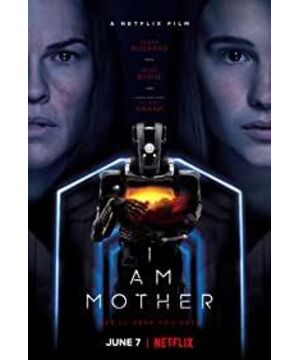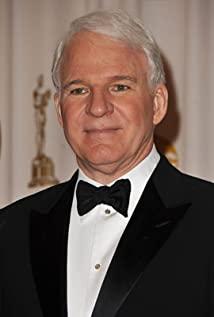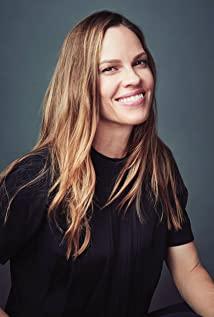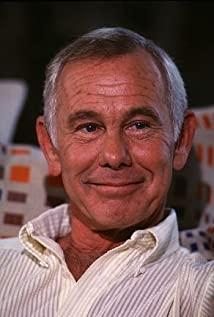"I Am Mother" was a surprise at the Sundance Film Festival. A robot and two heroines have completed the apocalypse of human beings, the creation of perfect human beings.
Except for the slightly slow rhythm of the second act in the middle of the narrative, the whole film is full of suspense, and the dilemma that is constantly thrown during the filming process makes the audience and the heroine stand the test of human nature. "I Am Mother" is a collision between absolute rationality and the bad roots of human nature. The first and second scenes of the story relied on a lot of blank space and laid a lot of foreshadowing. The suspense in the third act led to several reversals of the plot, which made the audience who had been hooked by the suspense to be "burned with lust" again suffered unexpectedly. The orgasm is closed. At the beginning of the film, the robot "mother" with female protection desire is activated and begins to take care of the heroine "daughter" who develops from the embryo .
At the same time, a striking logo was displayed on the screen. Humans have become extinct, and robots have begun the genesis of cultivating new human beings. In the closed laboratory, everything is safe and sound. The daughter receives the best education and eats healthy food. After 13,000 days, the daughter who has gradually grown up has a sense of autonomy. She became more and more curious about the outside world.
But everything is watched over by the robotic mother, who warns her daughter that the world outside is lifeless and barren. Enclosed space, a robotic mother and bred human daughter. A lot of blank space makes the audience puzzled, and strong curiosity is aroused under the minimalist opening design, so that the audience is determined to find out until the end of the plot.
The variable interloper appears in the second act, where a wounded woman comes to the heavy iron gate for help. Years later, to see daughters of the same kind insist on opening the door despite her mother's orders. The daughter is quite repulsive and wary of robots, and she accuses robots of killing humans. The daughter could only operate on the injured woman herself before saving the seriously injured woman from the god of death.
From this scene, the truth about the world outside the laboratory begins to emerge. But there are always lies in the truth. Human beings do not hesitate to cover up the truth for their own purposes, and achieve selfish desires through deception. The robot mother, the human daughter, and the interloper woman, the three "women" began a contest between reason and sensibility.
The woman hopes to leave with the heroine after the injury is healed, and go to find the same kind of human beings together; and the robot mother certainly does not want to see the fruits of her labor destroyed in one fell swoop. But the key to the whole film is the daughter's choice. In the face of temptation and responsibility, she must make a self-conscious choice, from childhood to adulthood, because she is responsible for the revival of human beings.
Robot mothers seem to be very caring, but they actually represent an absolutely rational side. She is constantly monitoring the conversation between her daughter and the woman, watching her daughter's reaction when faced with a choice. The climax of the second act, the woman took her daughter out of the laboratory semi-threateningly, and the robot mother opened the heavy iron gate to protect her daughter.
My daughter saw the outside world for the first time. It is a pity that the world outside the "cave" is not as colorful as Plato's depiction, but one side is dim and lifeless, full of yellow sand and giant machines. Robots began to cultivate corn to bring the earth back to life, suitable for human existence.
The daughter is looking forward to looking for the same kind with the woman, but she finds that everything is not as the woman described. "I Am Mother" made an amazing ending in the third act, which made the film continue to rise, and the theme was raised several levels at once. In fact, the robot mother is a human creation, but her task is to help her creator to improve herself. Humanity is completely disappointed in itself, thinking that it cannot survive through self-evolution. The greed of human beings and the inferiority of human nature have led to the extinction of races, and even brought disaster to the earth.
Humans pin their hopes on artificial intelligences that are smarter, more rational, more forward-looking and tougher than humans, and hope that they can allow new humans to be born through better education and testing after the first humans are extinct. The robot mother tests her daughter several times in the film. Physical function test, intelligence test, emotional test, but the most important thing is the test after the woman is involved in the laboratory.
In the face of the same kind of accusation, the same kind of begging for mercy, and the same kind of death, how the daughter responds, how to choose, and whether she can continue to complete the mission, this is what the robot mother is most concerned about. There are a large number of male and female embryos in the laboratory, and it is easy to complete the revival of human numbers, but how to prevent the human beings from repeating the same mistakes, it needs a female human who has the same emotions and cognition as the robot mother to guide.
The daughter who passes various tests is obviously the "Eve" or "Eve" chosen by the robot mother, but not only shoulders the task of cultivating the next generation of human beings by the machine, but also instills a more rational cognition into the next generation of human beings. Almighty without being weak. The film ends with twists and turns. The woman who broke into the laboratory is actually one of the exams used by the robot mother to test her daughter. The identity of the woman and her ending also made the audience sigh. In order to create the next generation of perfect human beings, the robot made a seemingly cruel, but understandable choice.
The classic train dilemma is a test of human nature, but it is not worth mentioning for rational robots. In the train theory, a speeding train is approaching, and there are one person and several people on both ends of the track. You can only choose one or a few. How do you choose?
For robots, they don't care if it's just one or just a few, they only care about which side has a higher chance of survival, or that side of the human being has a greater impact on the world. Quantity was never an issue in their relationship. But human beings cannot make choices easily. They will feel guilty or remorse for losing anyone, which is very likely to cause people on both sides of the orbit to face a crisis, which is one of the reasons why human beings will eventually go extinct.
In fact, in the film, such a choice also appeared. The woman hinted that there were humans living outside the laboratory, and the daughter hoped that her mother would allow her to accept the humans outside. But for the robot mother, the human beings living outside are representatives of inferiority, and their intervention may cause the experiment to fail completely.
The ending of the film is also very dark, as judged by the robot mother, the human beings living outside finally ended the tragic end of the first generation of human beings in cannibalism. The last dialogue between the robot mother and the woman also confirmed the origin of the woman's identity. The future is finally in the hands of human daughters carefully nurtured by robotic mothers. Genesis opened a new scene. The future of mankind has to rely on technology and the assistance of AI created by mankind to start anew. The moment we walk out of the laboratory and out of the cave, Plato's prophecy, can the fate of mankind really be changed?
View more about I Am Mother reviews











